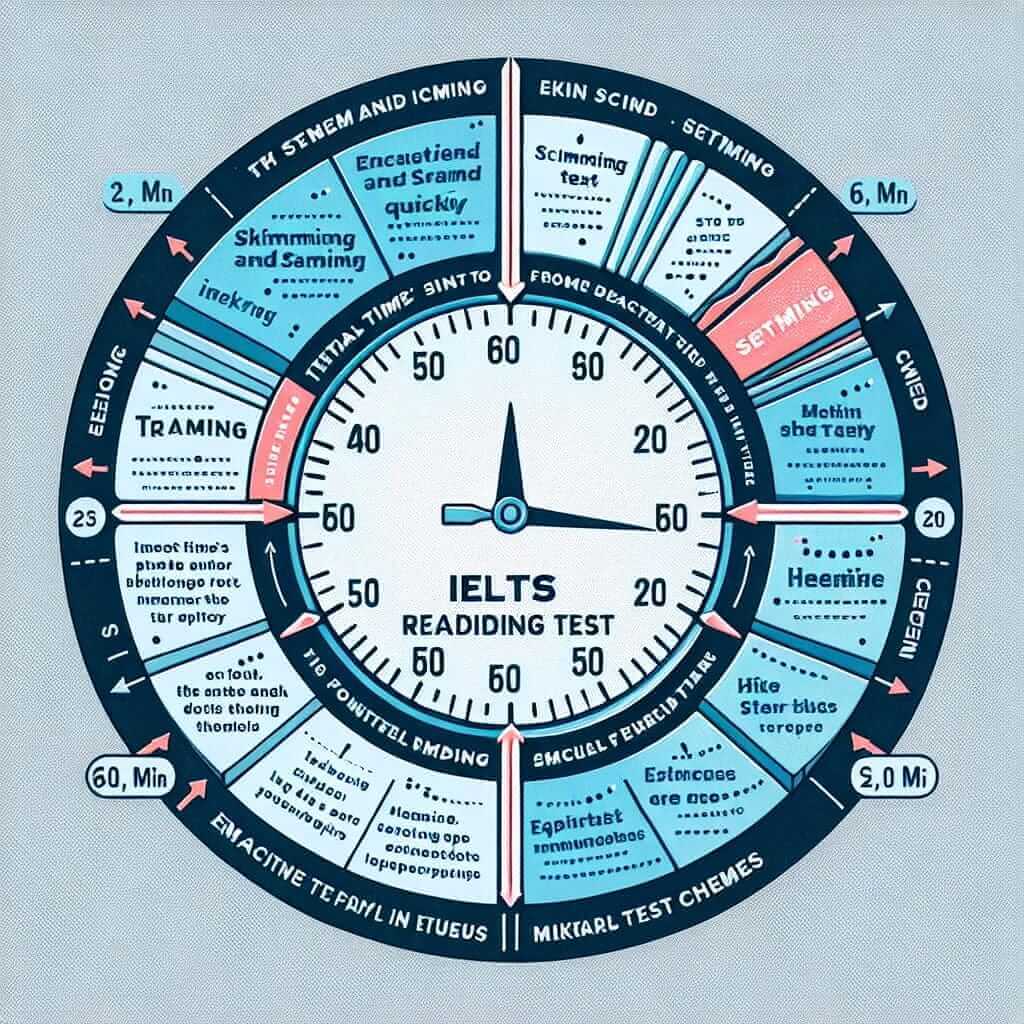As an IELTS instructor with over two decades of experience, I understand the pressures of the reading section. A common question I encounter from students is, “How much time do I actually have for IELTS reading?” It’s a crucial aspect of test strategy, and understanding how to manage your time effectively can significantly impact your overall score.
Deciphering the Time Crunch: 60 Minutes for 40 Questions
The IELTS Reading test, regardless of whether you choose Academic or General Training, presents you with 40 questions that need to be answered in 60 minutes. This means you have an average of 1.5 minutes per question. However, this is where strategic time management becomes crucial.
Strategic Time Allocation: Your Key to Success
The IELTS reading passages vary in length and complexity. While allocating 1.5 minutes per question might seem straightforward, it’s not a one-size-fits-all approach. Here’s a more strategic breakdown:
1. Skimming and Scanning: Your Initial 5 Minutes
- Purpose: Quickly grasp the main idea of each passage and identify key information.
- Technique:
- Read the title, headings, and subheadings.
- Focus on the first and last sentences of each paragraph.
- Look for keywords related to the questions.
2. Active Reading and Question Tackling: 15 Minutes per Passage
- Purpose: Understand the passage in detail and answer the corresponding questions accurately.
- Technique:
- Underline keywords and phrases in the questions.
- Actively search for the answers within the passage.
- Pay attention to synonyms and paraphrasing.
3. Review and Double-Check: The Final 5 Minutes
- Purpose: Ensure accuracy and catch any potential mistakes.
- Technique:
- Review your answers, particularly those you were unsure of.
- Check for grammatical errors and ensure your answers are logical.

Illustrative Example: Applying the Strategy
Let’s imagine you’re faced with a passage about the history of coffee. Your initial skim reveals headings like “Origins in Ethiopia,” “Spread to the Middle East,” and “Global Commodity.” When you move to the questions, one asks, “When did coffee become a major trade product?” Knowing where to look within the passage, thanks to your initial skim, saves you valuable time.
Tips for Time Optimization:
- Practice, Practice, Practice: Familiarize yourself with the test format and question types through consistent practice.
- Develop Your Reading Speed: Improve your reading speed by expanding your vocabulary and practicing speed reading techniques.
- Avoid Getting Stuck: If you’re struggling with a question, move on and return to it later.
- Time Yourself: During practice sessions, time yourself to simulate the actual test environment.
Conclusion: Time Management is Your Ally
Mastering time management in the IELTS Reading test is not about speed reading; it’s about strategic allocation of your time. By understanding the test structure, practicing regularly, and employing effective strategies, you can confidently approach the reading section and maximize your chances of achieving your desired band score. Remember, every minute counts, so make them work for you!